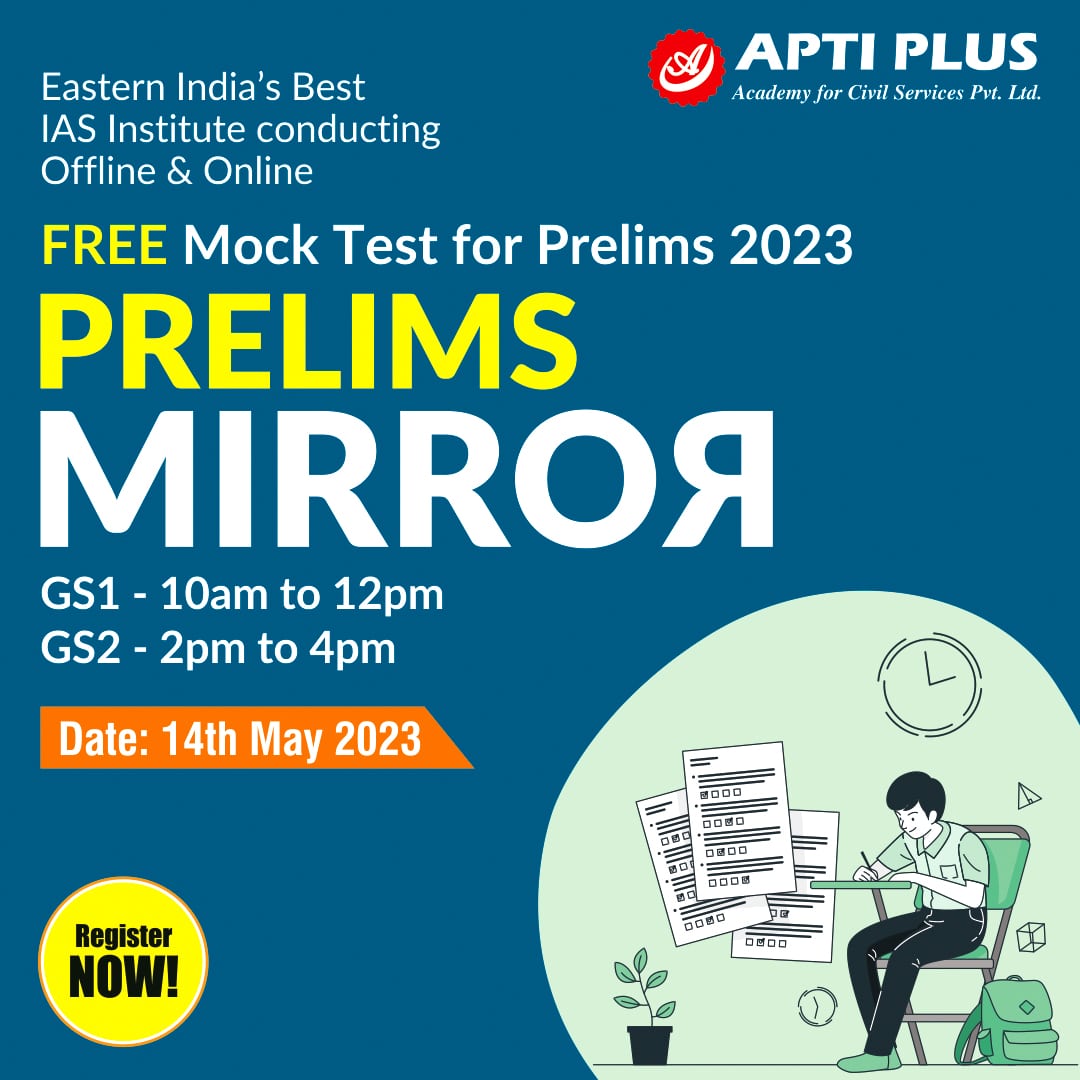Description
.jpg)
Disclaimer: Copyright infringement not intended.
Context
- In the last two financial years, only 329 claims for the accident insurance cover provided to bank account holders under the Pradhan Mantri Jan Dhan Yojana (PMJDY) have been settled out of the 647 claims that were filed.
About
- Launched in 2014, the Pradhan Mantri Jan Dhan Yojana (PMJDY) is a scheme run by the Ministry of Finance of the Government of India.
- This scheme assists underprivileged and needy sections of our society with simple access to financial services such as remittance, credit, insurance, pension, savings, and deposit accounts.
The Jan Dhan account is targeted towards the rural and urban Indian population that was earlier unable to get benefits from the financial services listed above.
Basic tenets of the scheme
- Banking the unbanked - Opening of basic savings bank deposit (BSBD) account with minimal paperwork, relaxed KYC, e-KYC, account opening in camp mode, zero balance & zero charges
- Securing the unsecured - Issuance of Indigenous Debit cards for cash withdrawals & payments at merchant locations, with free accident insurance coverage of Rs. 2 lakh
- Funding the unfunded - Other financial products like micro-insurance, overdraft for consumption, micro-pension & micro-credit.
_1.png)
Objectives of Pradhan Mantri Jan Dhan Yojana (PMJDY)
- The ultimate objective is to enable the citizens to understand financial operations and conduct them without difficulties.
- Keeping this in mind, some of the smaller objectives of the PMJDY scheme include the following.
- Dividing each district into Sub Service Area (SSA) to ensure banking services are available to them.
- Providing each household with Basic Banking Accounts and RuPay Debit cards
- Spreading financial literacy to the village levels.
- Creating Credit Guarantee Fund for covering defaults in overdraft accounts.
- Providing microinsurance to the eligible citizens.
- Designing pension schemes like Swavlamban for the unorganized sector.
- Ensure access of financial products & services at an affordable cost.
- Use of technology to lower cost & widen reach.
Pillars of PMJDY
The scheme was launched based on the following 6 pillars:
- Universal access to banking services – Branch and BC.
- Basic savings bank accounts with an overdraft facility of Rs. 10,000/- to every eligible adult.
- Financial Literacy Programme– Promoting savings, use of ATMs, getting ready for credit, availing insurance and pensions, using basic mobile phones for banking.
- Creation of Credit Guarantee Fund – To provide banks with some guarantee against defaults.
- Insurance – Accident covers up to Rs. 1,00,000 and life cover of 30,000 on account opened between 15 Aug 2014 to 31 January 2015.
- Pension scheme for unorganized sector.
.jpeg)
Features of Pradhan Mantri Jan Dhan Yojana (PMJDY)
Basic Savings Bank Deposit Account (BSBDA)
- Any Indian citizen eligible to open a regular bank account can open a BSBDA.
- Such an account does not require any minimum balance maintenance, and the account holders can use both bank branches and ATMs for depositing and withdrawing cash. However, one cannot withdraw cash more than four times a month.
|
S.No.
|
Features
|
Details
|
|
1.
|
No. of Accounts
|
One account is allowed for one person having no bank account in his/her name
|
|
2.
|
Interest Rate
|
Based upon the savings account interest rate offered by the bank
|
|
3.
|
Minimum Balance
|
No minimum balance is required to be maintained in the account. The account would be operable even when there is a zero balance in it
|
|
4.
|
Interest Earned
|
The amount which is deposited into the account earns an interest rate
|
|
5.
|
RuPay Debit Card
|
A RuPay debit card is offered with the account in the name of the account holder
|
|
7.
|
Accident Insurance Cover
|
An Accident Insurance Cover is available with the debit card offered to the account holder. For accounts opened before 28th August 2018, the insurance cover is for Rs.1 lakh and for accounts opened thereafter, the cover has been increased to Rs.2 lakhs
|
|
8.
|
Overdraft Facility
|
Eligible account holders can avail of an overdraft facility of up to Rs.10,000
|
Small Account/Chota Khata Account
- Under Jan Dhan Yojana, people can open small bank accounts without presenting legal documents.
- They can choose small accounts, which is usually valid for 12 months.
- The account holder will have to submit the necessary documents before this period, or the account will be deactivated.
- Beneficiaries can deposit a maximum of ₹50,000 in such accounts. Withdrawal is limited to ₹10,000 per month.
RuPay Debit Card
- PMJDY issues RuPay Debit Card to the Basic Savings Bank Account holder.
- It is a global card payment network widely used across India, protecting users against anti-phishing.
- Credit facilities on the card will be available if the accounts are operated effectively.
- An account holder needs to apply for a new card before the expiry date ends.
- It can also help utilize the Domestic Merchant Offers (POS and Ecom) with this card.
Accidental Insurance Cover
- The Jan Dhan Yojana scheme provides accidental insurance of ₹1,00,000 to the holders of non-premium cards, while those with premium cards can avail up to ₹2,00,000.
- People holding a RuPay Debit Card under PMJDY will be eligible for this insurance.
- If they successfully submit all the supporting documents within 60 days of the accident, the beneficiaries will receive the amount in their bank account.
Life Cover Insurance
- The holders of a RuPay Debit Card under the PM Jan Dhan scheme can also receive life cover insurance up to ₹30,000.
- It will only apply to people opening bank accounts for the first time under Jan Dhan Yojana with a debit card.
- The person should also be the head of the family or a major earning member.
- This scheme will be liable to a single payment of ₹30,000 upon the death of a beneficiary.
Bank Mitra
- Business Correspondent Agent or Bank Mitras under Jan Dhan Yojana are mainly responsible for advisory services to the beneficiaries. Usually, the workers of Bank Mitras include retail agents appointed by banks.
- It is meant for the rural areas, where bank branches are far-flung.
- Retired Bank Employees, Retired Teachers, Retired Government Employees and Ex-Servicemen can join as a Bank Mitras.
- Bank Mitras connect with the residents and guide them with banking solutions such as savings accounts, deposits, payments and withdrawals, mini-account statements, etc.

Important approach adopted in PMJDY based on past experience
- Accounts opened are online accounts in core banking system of banks, in place of earlier method of offline accounts opening with technology lock-in with the vendor.
- Interoperability through RuPay debit card or Aadhaar enabled Payment System (AePS).
- Fixed-point Business Correspondents.
- Simplified KYC / e-KYC in place of cumbersome KYC formalities.
Who are eligible for Pradhan Mantri Jan Dhan Yojana (PMJDY)?
- Individuals should possess an Indian Nationality Status.
- Individuals aged between 18 and 59 years can apply for this scheme.
- If minors above ten years apply, they will require support from their legal guardians for administering their PMJDY account.
- Entities eligible for this scheme include retired bank employees, teachers and government employees. In addition, individual owners of shops, Public Call Office operators, owners of petrol pumps, agents of small scheme companies, etc., can also apply.
Who is not eligible for the scheme?
- State or Central Government employees, public sector employees and people with taxable income will not be eligible for life cover insurance under Jan Dhan Yojana.
- Existing income tax payees and their families are not eligible to apply for the PM Jan Dhan Yojana.
- If one is registered with the Aam Aadmi Bima Yojana, she cannot benefit from this scheme. However, if one wants to avail of the Jan Dhan account benefits, then she can do so by giving up the Aam Aadmi Bima Yojana scheme
Benefits of Pradhan Mantri Jan Dhan Yojana (PMJDY)
- Indian citizens, particularly those residing in rural areas, can receive management assistance for their financial requirements.
- The banking process is made simple with the help of Bank Mitras, who guide the citizens regarding mobile banking usage.
- Account-holders will not have to maintain any minimum amount.
- Beneficiaries can enjoy interest on their deposits.
- Citizens without immediate access to legal documents and ID proofs can open small accounts without producing documents for at least 12 months.
- The scheme provides easy access to pensions and insurances to the beneficiaries.
- Beneficiaries can avail of an overdraft facility up to ₹10,000. However, this is only available against one account per household.
- This scheme also provides loans up to ₹5,000 to beneficiaries after completing six months of account transactions.
- Beneficiaries get up to ₹30,000 for life cover insurance in case of death within the specified term.
- PMJDY accounts are eligible for Direct Benefit Transfer (DBT), Pradhan Mantri Jeevan Jyoti Bima Yojana (PMJJBY), Pradhan Mantri Suraksha Bima Yojana (PMSBY), Atal Pension Yojana (APY), Micro Units Development & Refinance Agency Bank (MUDRA) scheme.

Extension of PMJDY with New features –
The Government decided to extend the comprehensive PMJDY programme beyond 28.8.2018 with some modifications
- Focus shift from ‘Every Household’ to Every Unbanked Adult’.
- RuPay Card Insurance - Free accidental insurance cover on RuPay cards increased from Rs. 1 lakh to Rs. 2 lakh for PMJDY accounts opened after 28.8.2018.
- Enhancement in overdraft facilities -
- OD limit doubled from Rs 5,000/- to Rs 10,000/-; OD upto Rs 2,000/- (without conditions).
- Increase in upper age limit for OD from 60 to 65 years.
Jan Dhan Darshak App
- A mobile application, was launched to provide a citizen-centric platform for locating banking touch points such as bank branches, ATMs, Bank Mitras, Post Offices, etc. in the country.
- Over 8 lakh banking touchpoints have been mapped on the GIS App. The facilities under Jan Dhan Darshak App could be availed as per the need and convenience of common people.
Evaluation of PMJDY
- The success of the PMJDY since August 28, 2014, is reflected in terms of opening of over 46 crore bank accounts with deposit balance of Rs 1.74 lakh crore with its expanded coverage to 67% rural or semi-urban areas as well as 56% of women Jan Dhan account holders.
_2.png)
- Continuation of PMJDY beyond 2018 saw a marked shift in approach to meet challenges and requirements of the emerging Financial Inclusion landscape in the country.
- There has been a shift in focus from “every household’ to “every adult”, with added emphasis on the usage of accounts by enhancing Direct Benefit Transfer (DBT) flows through these accounts, promoting digital payments through the use of RuPay cards, etc.
- The JAM pipeline created through account holders’ consent-based linking of bank accounts with Aadhar and mobile numbers of the account holders, which is one of the important pillars of FI ecosystem, has enabled instant DBT under various government welfare schemes to the eligible beneficiaries.
- The advantage of the architecture created under FI ecosystem came handy during the Covid-19 pandemic when it facilitated direct income support to farmers under PM-KISAN and transfer of ex-gratia payment to women PMJDY account holders under Pradhan Mantri Garib Kalyan Package (PMGKP) in a seamless and time-bound manner.
- One in 2 accounts opened between Mar’14 to Mar’20 was a PMJDY account. Within 10 days of nationwide lockdown more than about 20 crore women PMJDY accounts were credited with ex-gratia.
- Whether it is direct benefit transfers, COVID-19 financial assistance, PM-KISAN, increased wages under MGNREGA, life and health insurance cover, the first step is to provide every adult with a bank account, which PMJDY has nearly completed.
Major loopholes
- While rural banking has done considerably well under PMJDY, the government has failed to address some major loopholes, according to experts.
- These include -
- A rise in the number of dormant accounts,
- Duplication of accounts, and
- Lack of access to digital banking.
Dormant Accounts and their implications
- Under initiatives like Jan Dhan Yojana, banks persuade people to open accounts as they have to show the numbers. So, often they ended up opening multiple accounts for the same person, leading to the rise in dormant accounts.
- Dormant accounts, or those with low deposits, or minimal usage, increase the carry cost for banks. The total number of operative/active Jan Dhan accounts declined in August 2022.
- Of the total 46.25 crore PMJDY accounts in August 2022, 37.57 crore, or 81.2 percent, were operative. However, in August 2021, 85.6 percent (36.86 crore) of the accounts were active.
Lack Of Access to Digital Banking
- Due to a lack of access to digital banking, account holders fail to keep track of their monies.
Skewed ratio of functional Rupay cards and the Number of Accounts
- To avail digital banking facilities like UPI, it is important that account holders have functional debit cards. If we look at the number of functional Rupay cards and the number of accounts, we find a very skewed ratio.
- Most account holders haven’t been able to renew their debit cards.
- Between August 2015 and August 2022, the number of Rupay debit cards issued to beneficiaries has gone up by 16.27 crores, while the number of beneficiaries has jumped by more than 28.5 crore.
-min.jpg)
Lack of Digital Literacy
- A lack of digital literacy makes it difficult for rural customers to avail of banking services.
KYC Compliance
- It is often difficult to conduct the KYC, or Know Your Customer, procedure that needs to be done in person every time a new account is created.
The road ahead
- According to industry experts, there is much room for improvement.
- Financial inclusion needs policy-led intervention, suitable financial products, information and communication technologies, and data infrastructure.
- Though some firms have launched initiatives like Banking Sakhis (women trained in banking who teach others in the community) and banking correspondents to help the people, digital literacy is required so that customers can make the best use of banking facilities.
Need of the hour:
-
- Endeavour to ensure coverage of PMJDY account holders under micro insurance schemes.
- Promotion of digital payments including RuPay debit card usage amongst PMJDY accountholders through creation of acceptance infrastructure across India.
- Improving access of PMJDY account holders to Micro-credit and micro investment such as flexi-recurring deposit etc.
Closing Remarks
- Financial Inclusion is among the top-most priority as it is an enabler for inclusive growth.
- It provides an avenue for the poor for bringing their savings into the formal financial system, an avenue to remit money to their families besides taking them out of the clutches of the usurious money lenders.
- Pradhan Mantri Jan Dhan Yojana (PMJDY) has been one of the most far-reaching initiatives towards Financial Inclusion not only in India but in the world.
- PMJDY has brought the unbanked into the banking system, expanded the financial architecture of India and brought financial inclusion to almost every adult.
|
PRACTICE QUESTION
Q. Which of the following statements are correct with reference to Pradhan Mantri Jan Dhan Yojana (PMJDY)?
a) If one is registered with the Aam Aadmi Bima Yojana, she cannot benefit from this scheme.
b) The Jan Dhan Yojana scheme provides accidental insurance of ₹1,00,000 to the holders of non-premium cards, while those with premium cards can avail up to ₹5,00,000.
c) Under Jan Dhan Yojana, people can not open small bank accounts without presenting legal documents.
d) The holders of a RuPay Debit Card under the PM Jan Dhan scheme can also receive life cover insurance up to ₹30,000.
1. a and b only
2. b and c only
3. a and d only
4. All of the above.
Correct Answer: Option 3
|

https://www.thehindu.com/news/national/only-half-of-pradhan-mantri-jan-dhan-yojana-insurance-claims-settled-in-two-years/article66777561.ece




.jpg)
.jpg)
_1.png)
_2.png)







